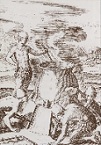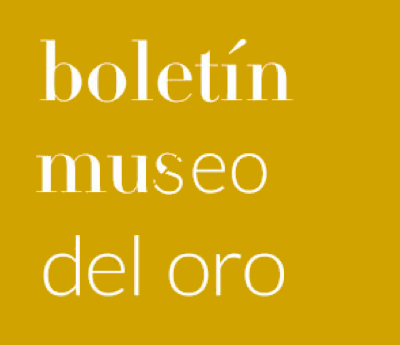Abandoning Arsenic? - Technological and Cultural Changes in the Mantaro Valley, Perú
Resumen
Los artefactos de cobre excavados por el Proyecto Arqueológico del Alto Alto de Mantaro (UMARP) en el Perú muestran que el bronce arsenical fue uniformente reemplazado por bronce estañífero luego de la invasión inca del valle del Mantaro. Los objetos del primer período estudiado (1000 a 1350 d.C.) son esencialmente de cobre. En el segundo período ( 1350 a 1450 d.C.) se observa el uso de arsénico, aunque en porcentajes menores de los esperados para modificar las propiedades del metal. Tras la conquista inca (1450 a 1533 d. C.) persiste el uso de cobre pero aparecen piezas que contienen estaño en porcentajes que modifican sus características (agujas más delgadas y largas, bordes más cortantes, tupus brillantes, piezas mejor fundidas) sin que sea notoria su utilización como bienes de prestigio.
Referencias bibliográficas
BUDD, Paul. 1990. Eneolithic arsenical copper: heat treatment and the metallographic interpretation of manufacturing processes. Paper presemed at Archaeometry '90, Heidelberg, 1991.
BUDD, Paul and Barbara OTTAWAY. 1989. The properties of arsenical copper alloys: implications for the development of Eneolithic metallurgy. Paper presented at Archaeological Sciences 1989, Bradford, 1991.
COSTIN, Cathy L. and Timothy Earle. 1989. Status distinction and legitimation of power as reflected in changing patterns of consumption in late prehispanic Peru. En American Antiquiry 54:691-714.
CRADDOCK, Paul T. 1995. Early metal mining and production. Washington, D.C. : Smithsonian lnstitution Press.
D'ALTROY, Thrence N. 1992. Provincial power in the lnka empire. Washington, DC.:Smithsonian Institution Press.
D'ALTROY, Terence N., and Timothy K. EARLE. 1985. Staple finance, wealth finance, and storage in the Inka political economy. En Current Anthropology 26:187-206.
EARLE, Timothy K. 1987. Archaeological field research in the upper Mamaro, Peru, 1982-1983: investigations of Inka expansion and exchange. Institute of Archaeology, University of California, Los Angeles.
EARLE, Timothy K., Terence N. D'ALTROY, Catherine J. LEBLANC, Christine A. HASTORF, and Terry Y. LEVINE. 1980. Changing settlement patterns in the Upper Mantaro Valley, Peru. En New World Archaeology IV: 1-49.
LECHTMAN, Heather. 1975. Issues in Andean metallurgy. Paper presented at Pre-Columbian metallurgy of South America, Dumbarton Oaks, 1979
LECHTMAN, Heather. 1980. The central Andes: metallurgy without iron. En The coming of age of iron: 26 7-334, Theodore Wertime, A. and James D. Muhly (Eds). New Haven : Yale University Press.
LECHTMAN, Heather. 1984. Andean value systems and the development of prehistoric metallurgy. En Technology and Culture 25:1-36.
MCKERRELL, Hugh, and R. F. TYLECOTE. 1972. The working of copper arsenic alloys in the Early Bronze Age and the effect on the determination of provenience. En Proceedings of the Prehistoric Society 38: 209-219.
NORTHOVER, j. Peter. 1989. Properties and use of arsenic-copper alloys. Paper presented at International symposium on Old World archaeometallurgy, Heidelberg.
OWEN, Bruce. 1986. The role of common metal objects in the Inka state. Master of Arts, University of California, Los Angeles.




